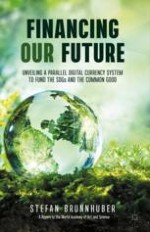
2021 | OriginalPaper | Buchkapitel
1. A New Narrative for the Anthropocene Era: On Boundaries, Interconnectedness and the Global Commons
verfasst von : Stefan Brunnhuber
Erschienen in: Financing Our Future
Aktivieren Sie unsere intelligente Suche, um passende Fachinhalte oder Patente zu finden.
Wählen Sie Textabschnitte aus um mit Künstlicher Intelligenz passenden Patente zu finden. powered by
Markieren Sie Textabschnitte, um KI-gestützt weitere passende Inhalte zu finden. powered by